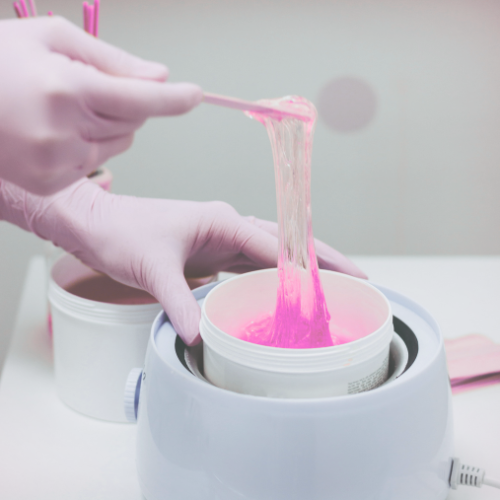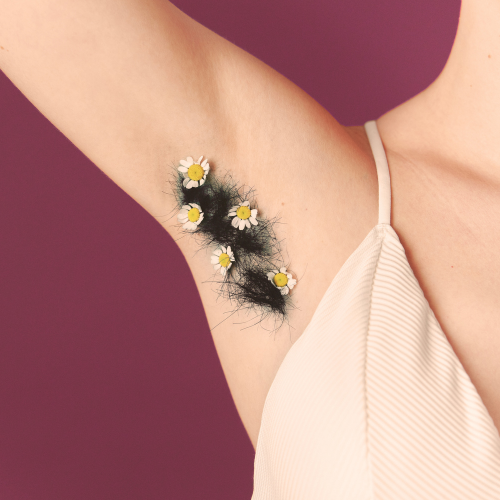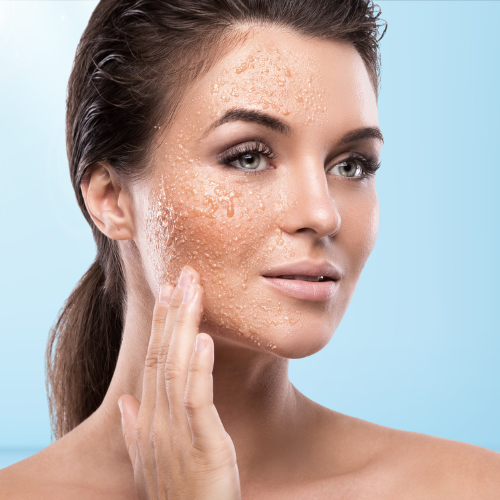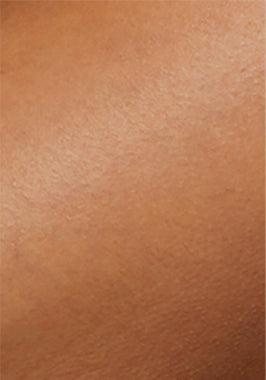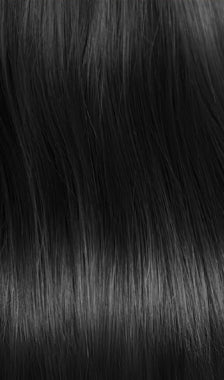Does Hair Waxing Stop Hair Growth
It can be difficult to sort through hair removal options, especially with the conflicting advice available. In the UK, a common query is: "Does hair waxing stop hair growth?" It's a prevalent issue that provokes discussion among dermatologists, professional aestheticians, and beauty enthusiasts.
Misinformation abounds, ranging from assertions that waxing permanently stops hair to myths about thicker, darker regrowth. You're not alone if you're not sure if your frequent waxes are truly removing hair or merely making it less noticeable.
We'll clear up the confusion in this guide. We'll dispel common misconceptions and provide fact-based information to help you make well-informed decisions about your hair removal regimen right here in the UK.
You'll learn the real effects of waxing on your hair follicles, how it fits into the cycle of natural hair growth, and how it compares to more permanent options like IPL therapy.
How Waxing Affects Hair Growth at the Root
Waxing breaks the natural cycle of hair growth by removing hair from the root. The three main stages of hair growth are telogen (resting), catagen (transition), and anagen (active growth). Waxing breaks this cycle by removing hair during any stage, which can progressively weaken the follicle and postpone regrowth.
The thickness and density of hair may eventually be diminished by this repeated trauma. Consider every waxing session as a gentle reminder to the follicle to slow down. Regular waxing may lead to finer, sparser hair, though this is not permanent.

Biological Factors That Influence Results:
Hormones
Fluctuations during puberty, pregnancy, or from conditions like PCOS or thyroid disorders can cause faster, thicker regrowth. Medications and stress also impact how hair responds to waxing.
Genetics
Inherited traits determine your hair’s colour, coarseness, and growth speed. Some individuals naturally regrow hair more quickly or have more resilient follicles, making results from waxing vary.
Hair Texture
Thicker, coarser hair may resist weakening longer, while finer hair tends to respond faster to repeated waxing. Curly hair may also behave differently due to its growth pattern.
Diet
Nutrient intake, especially protein, biotin, and vitamins, affects follicle strength and regrowth rates. A well-balanced diet supports better skin and hair health post-waxing.
Studies suggest a 6–8% reduction in regrowth after each session with consistent waxing. This is why many in the UK opt for regular waxing as part of their long-term hair management strategy.
The Role of Waxing Frequency in Slowing Hair Growth
If you're aiming for long-term hair reduction, establishing the right waxing routine is essential. For most people in the UK, a waxing schedule of every 3 to 6 weeks strikes the perfect balance, allowing enough regrowth for effective removal without letting hair grow too long or coarse.
Each waxing session removes hair from the root and delivers mild trauma to the follicle. Over time, this weakens the follicle’s ability to regrow hair as thickly or as quickly. Consistency is key. Repeated sessions help train the follicles, resulting in finer, sparser regrowth.
Why Frequency Matters: Interrupts irregular growth cycles
- Gradually reduces hair density
- Weakens follicles for softer, lighter regrowth
Benefits of Sticking to a Schedule: Fewer ingrown hairs and skin irritation
- Extended hair-free periods
- Smoother, more even skin texture
- Natural exfoliation during waxing sessions
Noticeable results typically emerge after 6–8 consistent sessions, especially when waxing is maintained year-round.
Pro Tip for UK Clients
Avoid alternating between waxing and shaving. Shaving cuts the hair at the surface, which can reset follicle sensitivity and undo the progress gained through regular waxing.
Working with a qualified UK aesthetician can help you tailor a waxing schedule that fits your hair type, skin sensitivity, and lifestyle, maximising both comfort and long-term results.

Waxing vs IPL Therapy: Which Reduces Hair Growth Better?
When considering hair removal options in the UK, many people weigh up waxing versus IPL (Intense Pulsed Light) therapy to determine which offers better long-term results. Both methods can reduce hair growth, but they work in different ways and suit different needs.
Waxing
Waxing removes hair from the root, delivering immediate smoothness and exfoliation. It’s suitable for all skin tones and hair types and doesn’t require syncing with the hair growth cycle. However, the results are temporary, typically lasting 3–6 weeks, and regrowth is inevitable. Over time, regular waxing can weaken follicles, often resulting in finer, sparser regrowth, but it is not a permanent solution.
IPL Therapy
IPL uses broad-spectrum light energy to target melanin in the hair follicle during the anagen (active growth) phase. It requires 6–10+ sessions for best results, but can lead to long-term hair reduction, especially in individuals with light skin and dark hair. IPL is considered semi-permanent, with maintenance sessions needed every few months.
3. Waxing Frequency (Regular vs. First-time)
First-time waxers may experience a shorter duration between sessions, as their hair follicles are stronger and less accustomed to being removed. On the other hand, regular waxers may find that their hair grows back slower and sparser due to the weakened hair follicles.
In the UK, many women start with more frequent waxing sessions to establish a routine, eventually extending the time between appointments as the follicles weaken.
Comparison Table
| Feature | Waxing | IPL Therapy |
|---|---|---|
| Hair Type Suitability | All types | Best for dark hair, light skin |
| Results Duration | 3–6 weeks | Long-term (with maintenance) |
| Onset of Results | Immediate | Gradual (after multiple sessions) |
| Pain Level | Moderate | Low to moderate |
| Cost Over Time | Affordable per session | Higher upfront cost, lower long term |
| Skin Sensitivity | Temporary irritation | Low risk if used correctly |
UK Options
Consumers in the UK can choose between at-home IPL devices, more affordable but slower, and professional IPL clinics, which use medical-grade devices for faster, more visible results.
For those seeking convenience and long-term reduction, IPL may offer better value, but waxing remains a flexible, accessible option for all hair types.

Myths About Waxing and Hair Growth – Debunked
Despite being one of the most popular hair removal methods in the UK, waxing is surrounded by persistent myths. These misconceptions can lead to false expectations, and sometimes disappointment. Let’s separate fact from fiction.
Myth #1: Waxing makes hair grow back thicker and darker
False: Waxing removes hair from the root and doesn't change the structure of your hair follicle. Regrowth may feel coarser at first, but with regular waxing, it typically becomes finer and lighter.
Myth #2: Waxing causes hair to grow back faster
False: Hair growth is primarily governed by genetics and hormones. Waxing can actually slow regrowth over time by disrupting the follicle’s cycle.
Myth #3: Waxing permanently stops hair growth
False: While consistent waxing can lead to sparser hair density, it doesn’t permanently eliminate hair. For more lasting reduction, consider laser or IPL therapy.
Myth #4: Everyone experiences the same waxing results
False: Factors like hair texture, hormonal balance, age, and skin type influence how waxing works for each individual..
Myth #5: Shaving is better than waxing
False: Shaving cuts hair at the surface, leading to faster regrowth. Waxing lasts longer, exfoliates the skin, and promotes smoother results over time..
Understanding these truths can help you choose the best hair removal method for your skin type, lifestyle, and long-term goals.
Pre & Post-Waxing Care for Optimal Results
Achieving smooth, irritation-free skin from waxing isn’t just about the treatment. It’s also about how you prepare and care for your skin before and after each session.
Pre-Waxing Care (24–48 Hours Before)
- Exfoliate gently using a soft mitt or mild scrub to remove dead skin cells and reduce the risk of ingrown hairs.
- Avoid heavy moisturisers on waxing day to help the wax adhere properly.
- Ensure skin is clean and dry prior to your appointment.
Post-Waxing Aftercare (0–48 Hours After)
- Apply a fragrance-free, soothing lotion (e.g. with aloe vera or vitamin E ) to reduce redness and calm the skin.
- Avoid direct sunlight , saunas, hot showers, and swimming pools for at least 48 hours post-treatment.
- Wear loose, breathable clothing to minimise friction, especially in sensitive areas like underarms or bikini line.

Optional Skin Brightening
If you experience post-waxing discolouration, consider using brightening ingredients like kojic acid, vitamin C, or alpha arbutin. But only apply them at night and always follow SPF during the day.
Signs of Trouble
- Redness or swelling that lasts more than 24 hours
- Pimples, breakouts, or signs of infection
- Always patch test new products before applying to waxed areas
Top UK skincare brands like Bioderma, Eucerin, and Simple offer gentle, effective solutions for post-wax care.
Consistent pre- and post-wax care enhances your results and keeps your skin smooth, healthy, and hair-free for longer.
Conclusion & Final Tips for Smoother, Less Hairy Skin
So, does hair waxing stop hair growth? While waxing doesn’t permanently stop hair growth, it remains one of the most effective methods for slowing regrowth and achieving smoother skin over time. With consistent sessions every 3–6 weeks, you can expect:
Finer, lighter regrowth
Longer-lasting hair-free results
Smoother skin with fewer ingrown hairs
Gradual reduction in hair density
The key to success is consistency. Stick to your waxing schedule, exfoliate regularly, and follow post-care routines to maximise the benefits. For those in the UK seeking more permanent solutions, IPL therapy or laser hair removal may be ideal—especially when paired with professional guidance.
FAQs – Does Hair Waxing Stop Hair Growth (UK Guide)
Does waxing stop hair growth permanently?
No, waxing doesn’t permanently stop hair growth. It weakens hair follicles over time, often leading to finer, sparser regrowth, but long-term growth is still influenced by genetics and hormone levels. For permanent reduction, laser or IPL treatments are more suitable.
How often should I wax to reduce regrowth effectively?
Most UK beauty professionals recommend waxing every 3–6 weeks, depending on your hair texture, growth rate, and area treated. Consistency is key— skipping sessions can delay visible long-term results.
Is waxing better than IPL for long-term results?
It depends on your goals. IPL offers longer-lasting reduction, but requires a financial investment and multiple sessions. Waxing is more affordable, suitable for all skin tones and hair types, and delivers immediate smoothness.
Does waxing make hair grow back thicker or darker?
No—this is a common myth. Waxing doesn’t change the structure of your hair. With regular treatments, regrowth typically becomes finer, lighter, and less dense.
What should I do before and after waxing?
Exfoliate gently 24–48 hours before waxing to remove dead skin. Afterwards, moisturise with a fragrance-free lotion, wear loose clothing, and avoid hot baths, tanning, or swimming for at least 48 hours.
How do hormones and diet affect waxing results?
Conditions like PCOS, thyroid imbalance, or pregnancy can affect hair growth and response to waxing. A balanced diet rich in protein and nutrients also supports healthy skin and follicles, enhancing your waxing results over time.
Ready to minimise regrowth for good?
Consult a licensed UK aesthetician or explore trusted at-home IPL devices to take control of your long-term hair removal journey.













